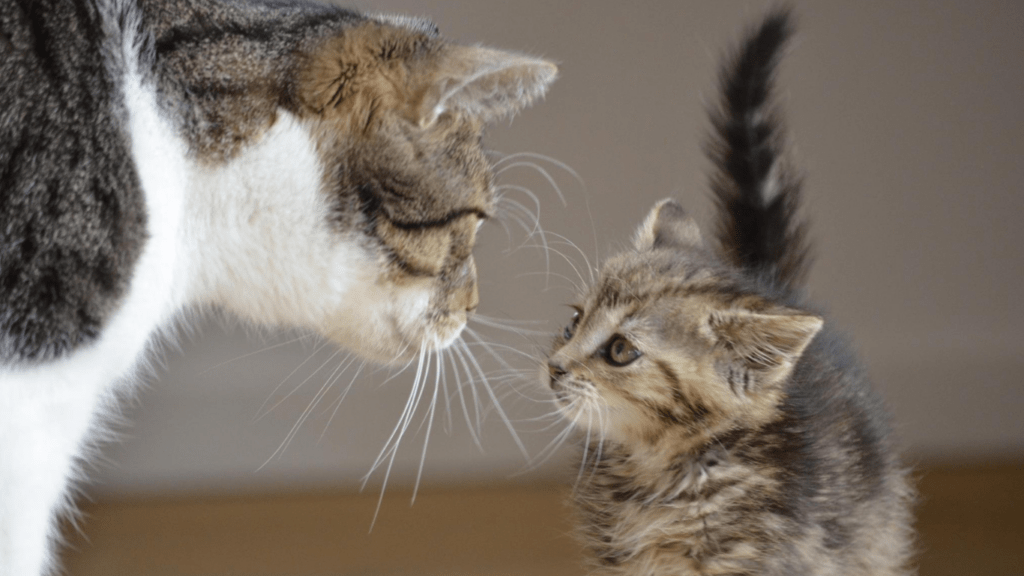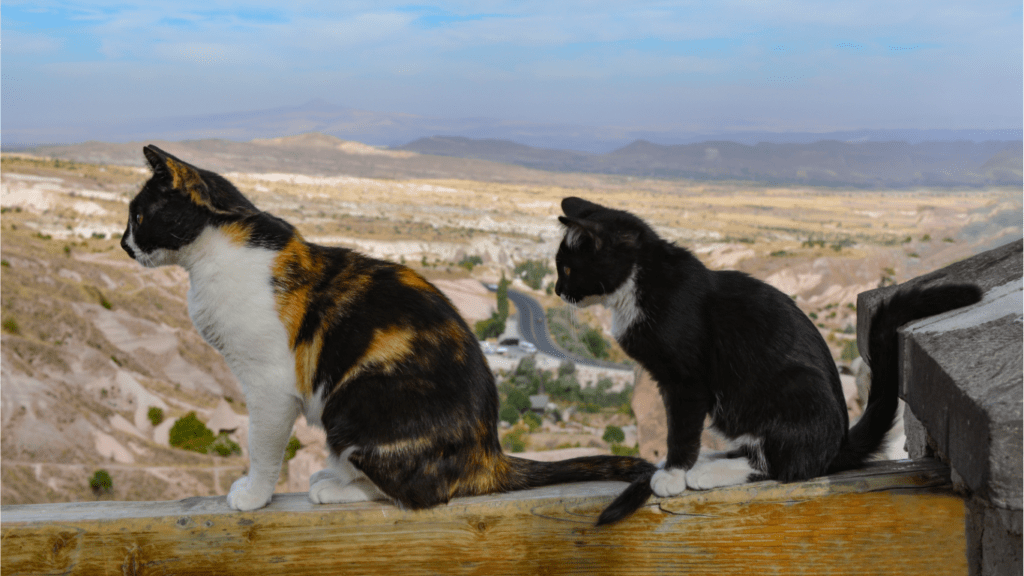Decoding the Basics of Cat Body Language
Cats use their bodies to communicate a wide range of feelings and intentions. To deepen our understanding of these messages, let’s explore two key aspects: tail movements and ear positions.
Tail Movements and Their Meanings
- Upright Tail: Indicates a happy, confident cat. For example, when I see my cat’s tail standing straight up, I know she’s contentedly greeting me.
- Puffed-Up Tail: Signals fear or aggression. For instance, when my cat encounters a dog, her tail fluffs up dramatically.
- Slowly Swishing Tail: Shows irritation. My cat’s slow, deliberate tail movements often precede her deciding she’s had enough petting and wants to be left alone.
- Rapid Tail Flicking: Manifests intense feelings. When my cat rapidly flicks her tail, it usually means she’s overstimulated or agitated by something in her environment.
- Ears Forward: Denote interest or curiosity. My cat’s ears perk up whenever she hears an unfamiliar sound, showing her intrigue.
- Ears Back and Flat: Indicate fear or aggression. When my cat is frightened, her ears flatten against her head, signaling she’s either scared or ready to defend herself.
- Ears Turning: Reflect attentiveness or uncertainty. If my cat’s ears rotate frequently, she’s likely trying to pinpoint the source of a noise or feeling unsure about her surroundings.
Understanding these basic cues helps me better connect with my cat, ensuring she feels safe, heard, and cared for.
Understanding Expressions and Sounds
Recognizing your cat’s expressions and sounds deepens the understanding of their emotional state. Cats use eyes, blinks, and vocalizations to communicate subtle messages.
Eye Signals and Blinking
Cats convey emotions through their eyes. A slow blink signals trust and relaxation. To reciprocate, blink slowly at your cat. Dilated pupils can indicate excitement or fear while constricted pupils might signal aggression or tension. Observe these signals closely to gauge your cat’s mood.
Vocalizations and Their Contexts
Cats employ various sounds to communicate needs and feelings. A purr generally indicates contentment though it might also express discomfort when paired with other signals.
Meowing often conveys a desire for attention, food, or interaction. Hissing or growling signifies fear or aggression. Paying attention to these vocal cues helps in responding appropriately to your cat’s needs.
Key Gestures and Their Interpretations
Understanding specific cat gestures enhances the communication between you and your cat. Below are common gestures and their interpretations.
Kneading and Purring
Kneading, where a cat pushes its paws against a soft surface, usually indicates contentment and comfort. Cats often knead when they’re relaxed, associating it with the comfort of nursing as kittens.
Purring also signifies contentment but can serve as a self-soothing mechanism in stressful situations. Pay attention to the context your cat is in to understand the true meaning behind these actions.
Hissing and Arching
Hissing reflects fear or agitation. When a cat feels threatened, it’ll often hiss as a defensive mechanism. You may notice hissing during encounters with unfamiliar animals or sudden movements.
Arching the back, coupled with puffed-up fur, signifies a cat’s attempt to appear larger and more intimidating to potential threats. This gesture is a clear sign of fear or readiness to defend itself if necessary.
Practical Tips for Responding to Your Cat’s Cues

Tail Movements
Understand tail language to interpret emotions. A gently waving tail usually means curiosity. When my cat’s tail puffs up, I know it’s scared or angry. I give it space to calm down. Recognizing these subtleties helps address my cat’s needs efficiently.
Ear Positions
Ear positions reveal a lot. Forward ears depict interest, while flattened ears signal fear or aggression. If I see my cat’s ears flatten, I avoid sudden movements and provide a safe space. These actions foster trust and reduce anxiety.
Eye Signals
Eye contact can communicate trust or discomfort. When my cat slow blinks at me, it’s a sign of affection. I return the slow blink to reinforce the bond. Avoid staring directly into a cat’s eyes if it’s in a defensive state, as this can escalate stress.
Vocalizations
Cat vocalizations vary. Purring often means contentment. If my cat meows repeatedly, it usually wants attention or food. I attend to these needs promptly. Responding to vocal cues quickly helps in establishing effective communication.
Body Posture
Body posture indicates mood. Arched backs often show fear. I avoid direct interaction when I see this. Instead, I create a calm environment. Similarly, when my cat kneads, it feels comfortable; I sometimes offer a soft blanket for added comfort.
Purring and Kneading
Purring and kneading signal contentment. When my cat purrs and kneads my lap, it’s happy. I gently pet it to further this positive association. These gestures encourage relaxation and enhance our relationship.
Hissing and Arching
Hissing and arching indicate distress. When I hear a hiss or see an arched back, I step back to avoid escalating the situation. Addressing the cause of distress, like removing a stressor, often helps.
Grooming
Excessive grooming can indicate stress. If my cat starts grooming too much, I assess potential stressors in its environment. Regular, calm grooming sessions help alleviate stress and reassure my feline friend.
Play Behavior
Play signals energy and engagement. When my cat starts playful behavior, I engage with toys like laser pointers or feather wands. This interaction not only provides exercise but also strengthens our bond.


